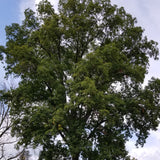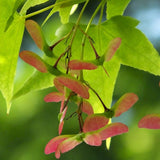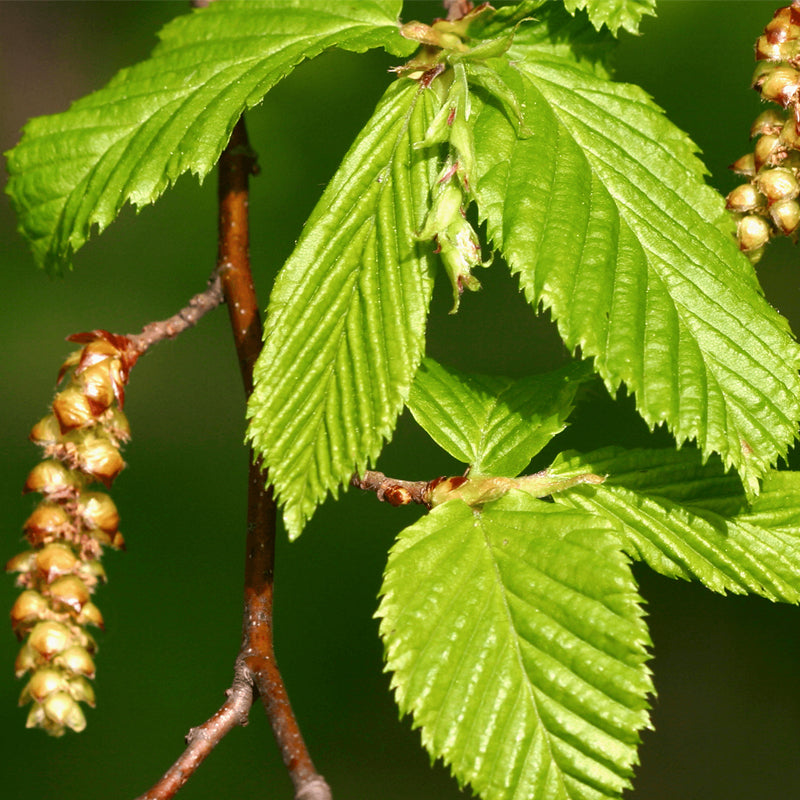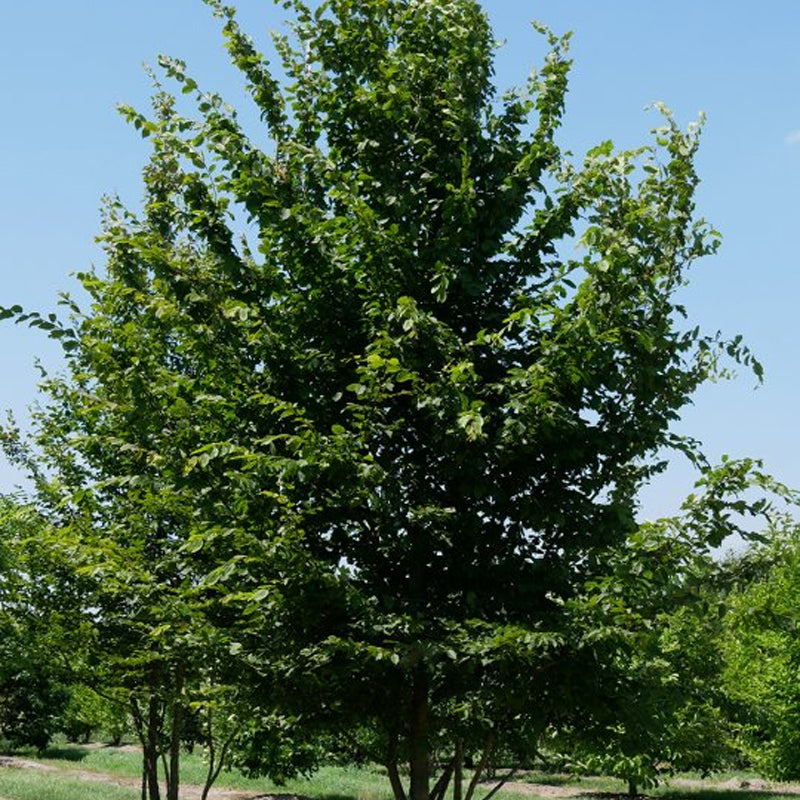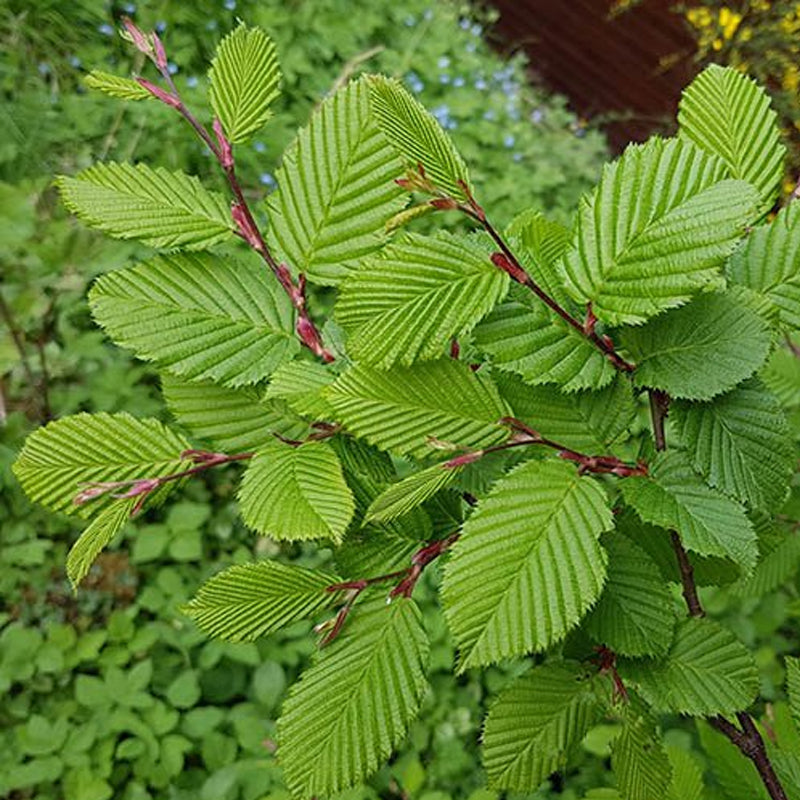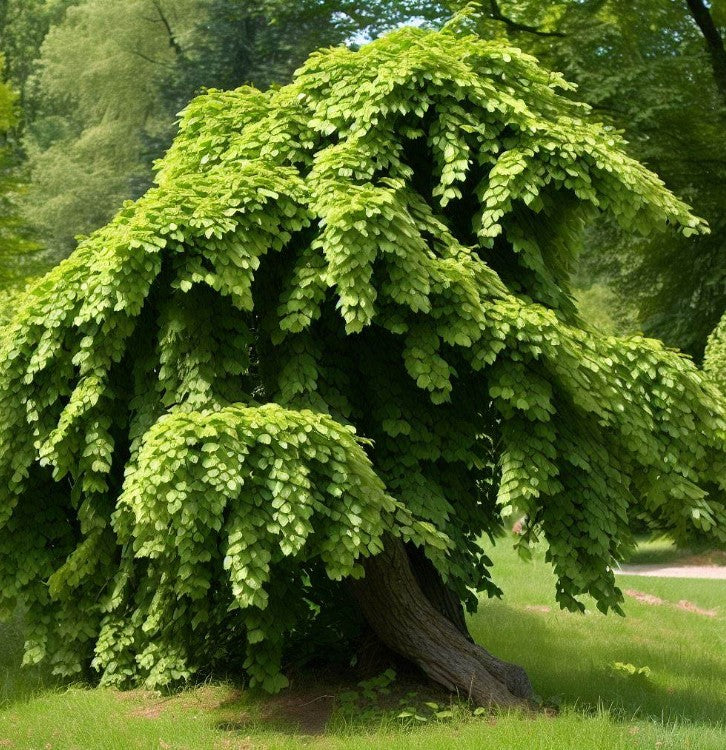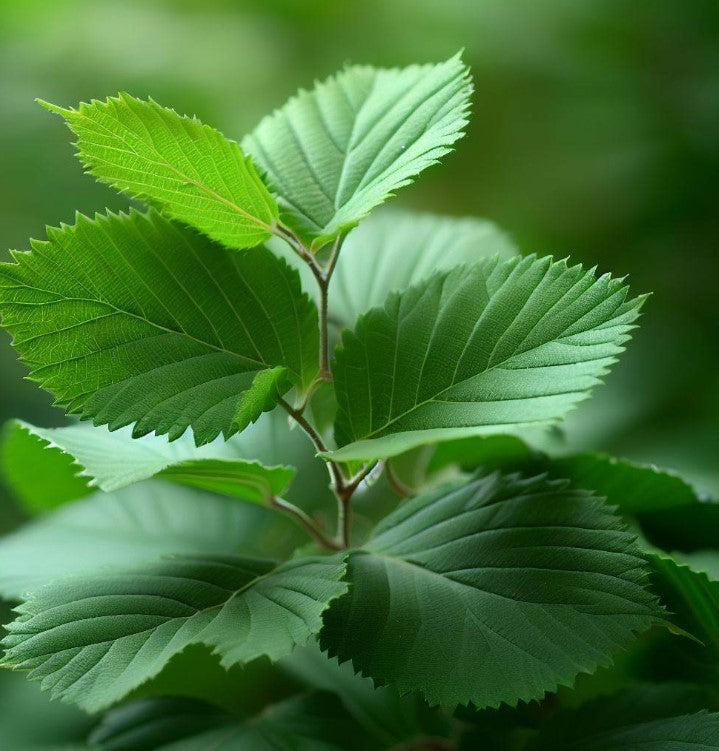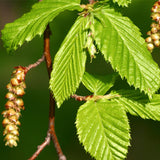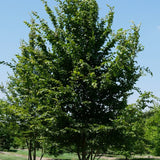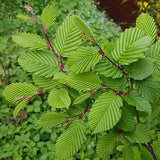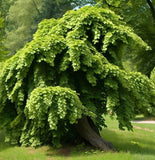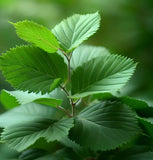Carpinus betulus (European Hornbeam)
Carpinus betulus (European Hornbeam) is a deciduous tree native to various parts of Europe, including central, eastern, and southern regions. It is also found in parts of western Asia. It prefers moist, well-drained soils and is commonly found in woodlands, hedgerows, and parklands.
Appearance: European Hornbeam is a medium-sized tree that typically reaches a height of 40 to 60 feet (12 to 18 meters) and a spread of 30 to 40 feet (9 to 12 meters). It has a dense, rounded crown and a distinctive fluted gray bark. The leaves are oval-shaped, serrated at the edges, and have prominent veins. In the fall, the foliage turns yellow to orange-brown, providing attractive autumn color.
Landscape Use: European Hornbeam is widely used in landscaping for its ornamental value. It is often planted as a shade tree, specimen tree, or hedge. Its dense foliage provides privacy and makes it suitable for formal hedging. It can also be pruned into various shapes and sizes, including topiary forms.
Foliage and Bark: The foliage of European Hornbeam is dense and dark green, providing a lush appearance. The leaves typically measure 2 to 4 inches (5 to 10 centimeters) in length. The bark is smooth and gray when young, but as the tree matures, it develops distinctive vertical fluting or ridges.
Flowers and Fruits: European Hornbeam produces inconspicuous flowers in spring, usually in the form of small catkins. The female flowers give rise to winged fruits known as samaras, which mature in late summer or early fall and can persist on the tree throughout winter.
Tolerance and Maintenance: European Hornbeam is a hardy and adaptable tree that can tolerate a range of soil conditions, including clay and alkaline soils. It prefers full sun to partial shade. Once established, it is relatively low-maintenance, requiring minimal pruning and regular watering during dry periods.
Environmental Benefits: European Hornbeam provides habitat and food for various wildlife, including birds and small mammals. Its dense foliage also helps to reduce noise and air pollution in urban areas.
Botanical Name : Carpinus betulus
Common Name : European Hornbeam
Height : 40 – 60 ft
Spread : 30 ft
Germination Info : Seed requires 30-60 days warm stratification followed by 60-120 days cold stratification
Hardiness zone : 5-8
Average seed per ounce : Approx. 500

